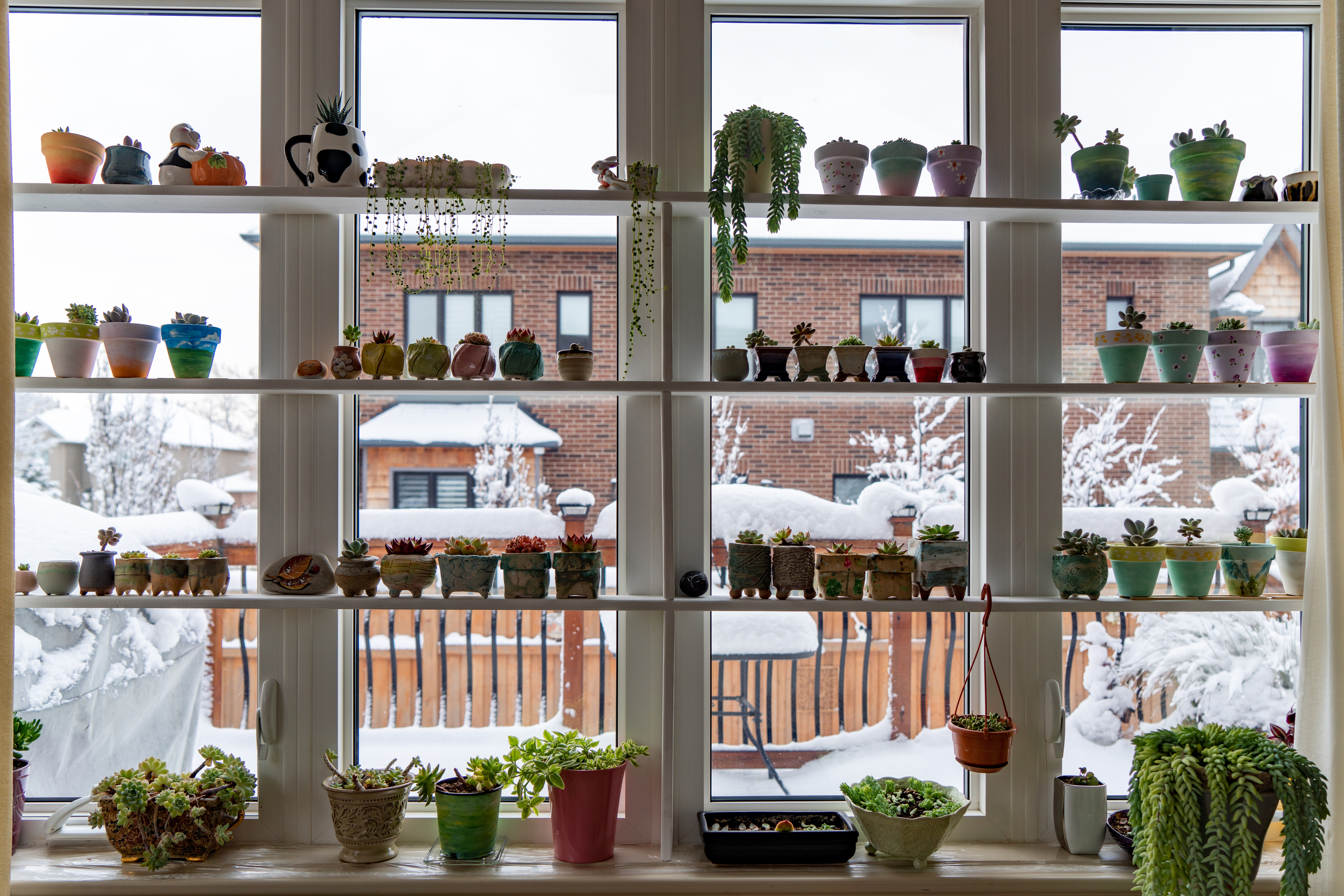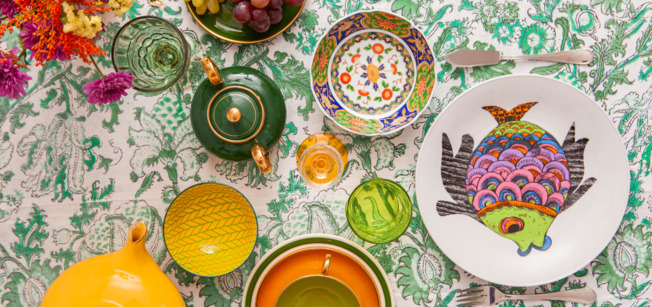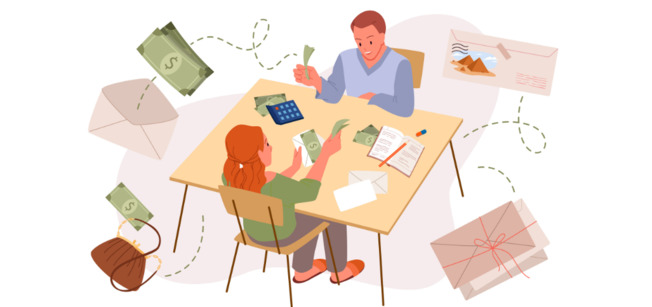
How This Expert Cares for His Houseplants in the Winter

By Lilly Milman
Oct 27, 2023
Patios, balconies, window boxes, and other outdoor spaces are where plants thrive during the late spring and summer months. But as the first frost approaches, it’s crucial that you bring your houseplants inside. Not only that, but you also need to adjust your plant care to make up for the colder weather and shorter days with lower light levels that come with the seasonal change this time of year.
We spoke with Alex Kantor, president of Perfect Plants Nursery, to learn more about the best houseplant care for the colder months ahead.
Bring Your Plants Inside — Now
“The time to move your plants in is now,” Kantor says, referring to mid-October. As soon as fall sets in, it becomes cold enough in the evenings that plants can be harmed. Even if you are not yet heating your apartment, inside on a windowsill where it can be exposed to direct sunlight is still a safer option than leaving them outside.
As far as the indoor temperature goes, Kantor says: “If it's okay for humans, it's going to be okay for a plant.”
Maintain Distance Between Plants and Heat
Many houseplant varieties prefer a warmer climate — and that can be recreated indoors using a heater during the winter — but keeping plants directly in front of or on top of a heating vent or radiator over winter months is a bad idea, according to Kantor. You’ll start to see the plant leaves nearest to the heater die off quickly, he says, which would be your first indicator that the plant is way too close to the heater and needs to be moved away. For a similar reason, directly next to a fireplace is also a less-than-ideal spot for a houseplant.
Don’t Place Plants Too Close to the Door
Think about how cold an incoming blast of air can be when you open and close your front door all winter long. You don’t want to be exposing your plant to those cold drafts throughout the day, because even in short bursts, they could be enough to cause serious damage. So, if you kept a plant by the door during warmer seasons, Kantor advises that you move it further inside your apartment once it starts getting chilly outside. Just make sure that wherever you put it, it gets enough light.
One surefire sign that your plants are too cold is if they have a sudden change in leaf color, if their leaves start browning, or if they start curling up.
Recreate a Greenhouse Environment Inside
The winter is not only colder, it’s drier. If your plants seem to be struggling inside, despite being in a heated apartment by a sunny spot, you can try to rescue them by taking some steps to mimic a greenhouse environment inside, Kantor says. While heating helps encourage growth in the winter, temperature may not even be the main problem (Kantor tends to greenhouses that get as cold as 50 degrees during the winter). Adding a humidifier to a room filled with plants or misting plants with a spray bottle can help increase the humidity levels of a room and counteract the dry air created by heating systems — just like a greenhouse.
If Your Plant’s Growth Slows, Don’t Panic
New growth is not necessarily your goal during the winter. When it’s cold, “plants are going to pause,” Kantor says. This isn’t a bad thing. Many plants — especially ones that are originally tropical plants — prefer a warmer, more humid climate, so summer is typically their main growing season. However, as long as they stay alive throughout the winter, you’ve done your job. Moving an indoor plant slightly closer to a heater, a window where it can get a decent amount of light, or putting it under a grow light if your apartment lacks natural light are all steps you can take to try to promote growth, but you will most likely see less growth than you did in the summer regardless.
Don’t Overwater
The biggest mistake that Kantor sees beginner plant parents making year round is overwatering or under-watering their plants. Don’t start giving your plants more or less water just because it’s colder outside, he says. Whether it’s the summer or winter months, he recommends sticking to a low-maintenance weekly watering schedule, which should be more of less fool-proof. If you want to get more advanced with your plant care, you can look up the exact water needs of each type of plant, but this should not be necessary for most common houseplant varieties.
Top cities
Atlanta Apartments
1,599 apartments starting at $700/month
Austin Apartments
5,111 apartments starting at $500/month
Baltimore Apartments
1,310 apartments starting at $475/month
Boston Apartments
5,631 apartments starting at $1,050/month
Charlotte Apartments
2,863 apartments starting at $560/month
Chicago Apartments
6,350 apartments starting at $638/month
Dallas Apartments
5,606 apartments starting at $595/month
Fort Worth Apartments
2,639 apartments starting at $500/month
Houston Apartments
5,269 apartments starting at $618/month
Las Vegas Apartments
1,077 apartments starting at $650/month
Los Angeles Apartments
11,134 apartments starting at $700/month
Miami Apartments
477 apartments starting at $1,200/month
Milwaukee Apartments
1,177 apartments starting at $545/month
New York Apartments
5,084 apartments starting at $1,000/month
Oakland Apartments
791 apartments starting at $850/month
Orlando Apartments
846 apartments starting at $940/month
Philadelphia Apartments
3,100 apartments starting at $500/month
Phoenix Apartments
4,190 apartments starting at $600/month
Pittsburgh Apartments
756 apartments starting at $450/month
Portland Apartments
2,128 apartments starting at $750/month
Raleigh Apartments
1,230 apartments starting at $550/month
San Antonio Apartments
3,495 apartments starting at $574/month
San Diego Apartments
2,871 apartments starting at $650/month
San Francisco Apartments
500 apartments starting at $830/month
San Jose Apartments
432 apartments starting at $1,100/month
Seattle Apartments
3,238 apartments starting at $650/month
Tampa Apartments
811 apartments starting at $812/month
Washington DC Apartments
2,217 apartments starting at $910/month


